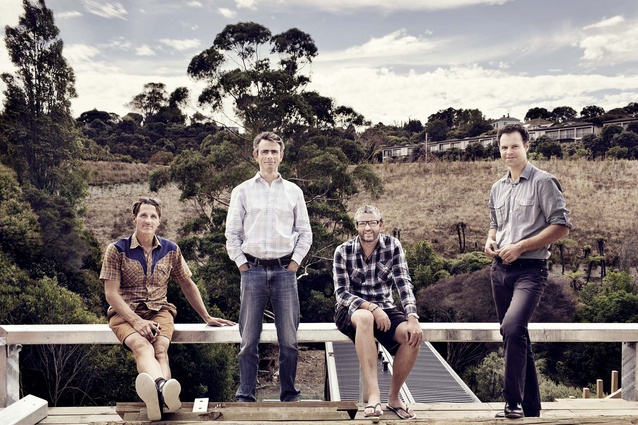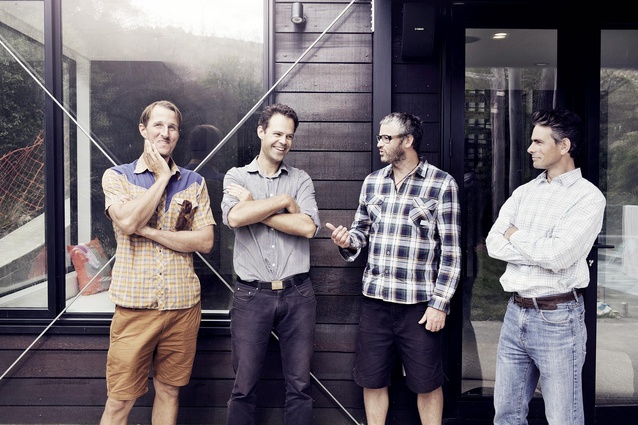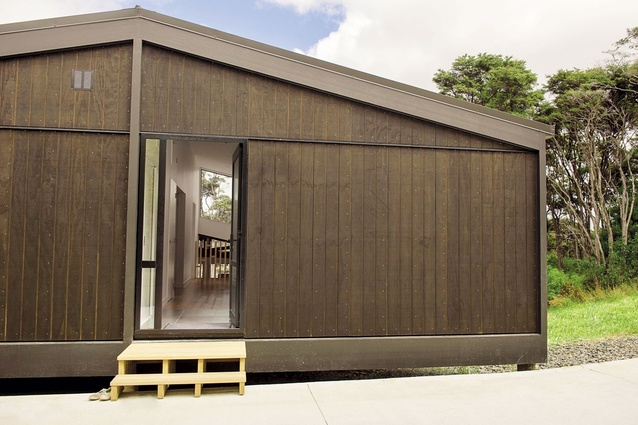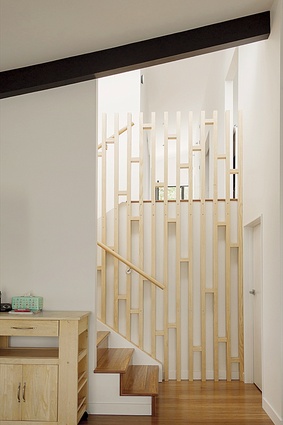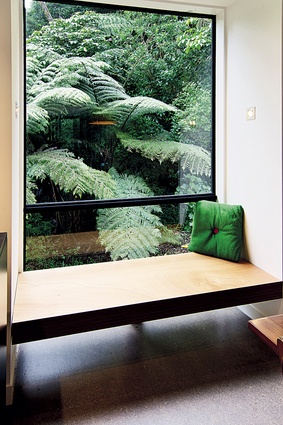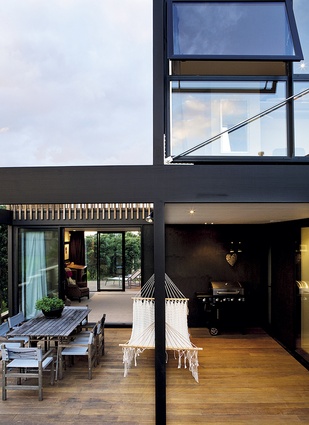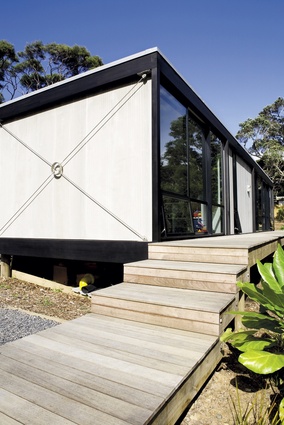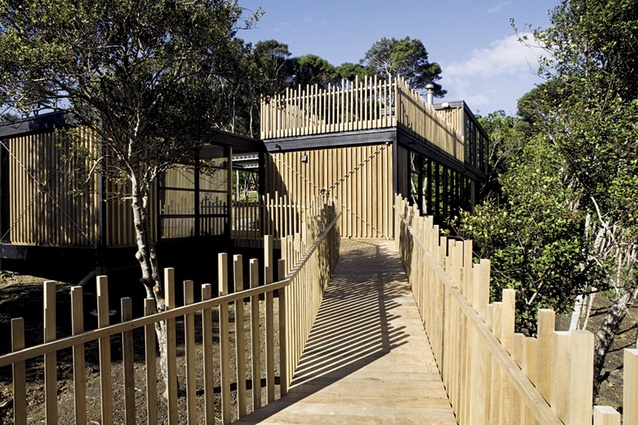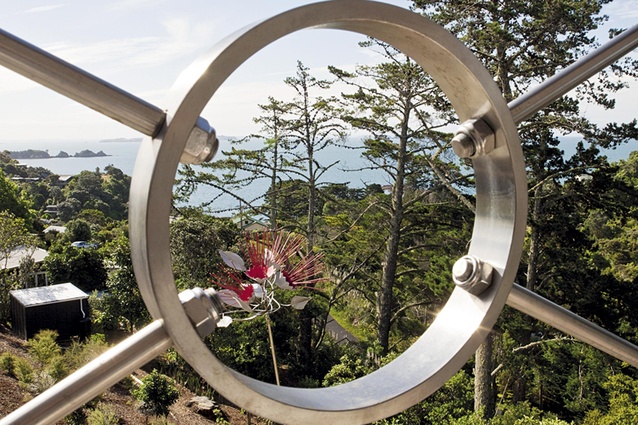Out of the box
About five years ago, four blokes got talking. Dan Heyworth, Nat Holloway, Tim Dorrington and Nat Jakich were all inspired by mid-century modernism and were keen to create simplistic, architecturally designed, replicable homes. And by the end of their conversation, they’d created Box Living, an Auckland based company that, since 2009, has designed 69 modular houses around New Zealand.
Urbis: How did the Box house concept come about?
Dan Heyworth: In the course of setting up a design-and-build company in 2004 that focused on ecological building, Nat Holloway and I met architect Tim Dorrington and builder Nat Jakich. We were all inspired by the mid-century modernist period, and had an interest in prefabricated building… so we got together as an integrated team to create a product. We’re trying to do for houses what IKEA does for furniture.
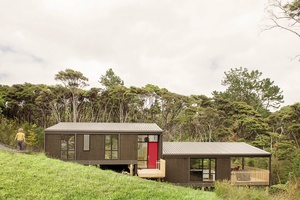
U: Why the name?
Tim Dorrington: Box is meant to be fairly playful. We didn’t want the name to take itself too seriously. We wanted something that loosely inferred what could be done; you can stack these boxes on top of each other and arrange them almost like a Tetris game.
U: What is the Box Living system?
TD: Essentially it is pre-designed houses custom-tailored to specific sites.
DH: Post-and-beam construction forms the exoskeleton of the house, and then we infill the gaps with wall panels and windows. The idea is that a lot of it can be prefabricated. As much of the building as possible is flat-packed and brought on site where it is assembled.
U: How does the system work?
DH: The designs are replicable and suit any site, with a few minor tweaks. The system allows people who may not have been able to afford an architecturally designed house to access one because, instead of paying for the design hours for a bespoke project, they can opt for the Box design which is already done and is customised to suit each site.
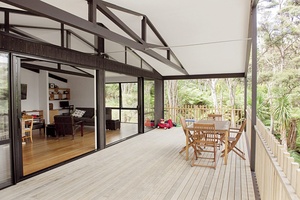
U: What sort of organisation is Box Living?
DH: We are a bit of a hybrid and operate on the plane between architect and house builder. There’s no one else who is working in that space in New Zealand at the moment.
U: Who does what on a day-to-day basis?
Nat Holloway: Tim Dorrington is the architect and Dan Heyworth is the general manager. So once their part is complete, and consents are issued, the projects are passed to Nat Jakich and I, who look after the construction side.
U: What are the benefits of working as a team?
TD: The time frame of the whole project is considerably shorter than it is for a traditional building project; it probably takes about half the time. If you are designing a non-Box house, you are starting with a blank canvas. We still have to plan the house but we know what the exterior and the materials will be.
U: What are Box house designs based on?
TD: Traditionally this type of modernist aesthetic was achieved in steel. The movement itself came about by using industrial materials in a residential setting. We originally looked at using steel, but it’s not from New Zealand, and the price is never certain. So Box houses utilise glulam [glued, laminated] timber.
NH: It’s a pretty cool-looking house. The first house we designed set the trend for the style and the key elements have remained: the full-height joinery, use of glulam post and beam, an exposed structure and cross braces.
U: Why do Box houses have relatively small floor areas?
TD: We have an ethos that things are not bigger than they need to be. There’s no reason for building big houses. The projects are all designed so there is absolutely no wasted space.
Nat Jakich: No Box house is ever tight. It is just well organized. Sometimes people are a bit doubtful about the size on paper but, once they walk into the space, those doubts disappear.
U: What about the exterior?
TD: It can be that the exoskeleton extends to create an outer room, or we have a couple of custom-designed products to provide shading and deck areas. Holiday houses generally maximise decks and minimise house size.
DH: We’re actually finding there is less and less of a difference between beach houses and urban dwellings.
TD: There are all these little pockets of urban baches all around Auckland, and there is more and more of a desire to build in this style. There seems to be a movement bubbling away there in the background. Box houses are a good fit for that.
U: What does the future hold?
DH: What we are really interested in developing are the buildings as a product. Standardisation and components are the way of the future. There’s a large opportunity there; semi-prefabricated houses could be hugely beneficial to the price of housing.

